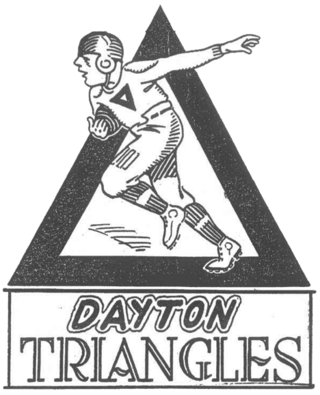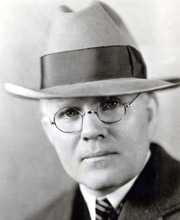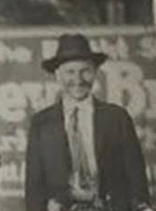The Akron Pros were a professional football team that played in Akron, Ohio from 1908 to 1926. The team originated in 1908 as a semi-pro team named the Akron Indians, but later became Akron Pros in 1920 as the team set out to become a charter member of the American Professional Football Association. Fritz Pollard, the first black head coach in the NFL, co-coached the Akron Pros in 1921. Paul Robeson played for the team in 1921 as well. He was among the earliest stars of professional football before football became segregated from 1934 to 1946. In 1926, the name was changed back to the Akron Indians, after the earlier semi-pro team. Due to financial problems, the team suspended operations in 1927 and surrendered its franchise the following year.
Buffalo, New York had a turbulent, early-era National Football League team that operated under multiple names and several different owners between the 1910s and 1920s. The early NFL-era franchise was variously called the Buffalo All-Stars from 1915 to 1917, Buffalo Niagaras in 1918, the Buffalo Prospects in 1919, Buffalo All-Americans from 1920 to 1923, Buffalo Bisons from 1924 to 1925 and in 1927 and 1929, and the Buffalo Rangers in 1926. The franchise, which was experiencing financial problems in 1928, did not participate in league play that season.
The Cleveland Tigers were the first Cleveland team franchise in what became the National Football League (NFL). The Tigers played in the "Ohio League" before joining the American Professional Football Association during the 1920 and 1921 seasons.
The Columbus Panhandles were a professional American football team based in Columbus, Ohio. The club was founded in 1901 by workers at the Panhandle shops of the Pennsylvania Railroad. They were a part of the Ohio League from 1904 before folding after one season. Three years later, the team tried again, playing in the Ohio League from 1907 to 1919, not winning a championship, before becoming charter members of the American Professional Football Association (APFA) which became the National Football League (NFL).

The Dayton Triangles were an original franchise of the American Professional Football Association in 1920. The Triangles were based in Dayton, Ohio, and took their nickname from their home field, Triangle Park, which was located at the confluence of the Great Miami and Stillwater Rivers in north Dayton. They were the longest-lasting traveling team in the NFL (1920–1929), and the last such "road team" until the Dallas Texans in 1952, who, coincidentally, descended from the Dayton franchise.
The Evansville Crimson Giants were a professional American football team based in Evansville, Indiana and were a part of the National Football League in 1921 and 1922. The Giants home games were played at Bosse Field. According to the Evansville Courier and Press in 1921, 'they surprised local fans in developing a winning team' and 'the Giants' one-sided victories over inferior non-league teams has had good fan reaction.' However, the team did not succeed, mostly due to scheduling mistakes and management problems. Evansville's local sporting enthusiasts also failed to respond favorably and attend the home games.

The Oorang Indians were a traveling team in the National Football League from LaRue, Ohio. The franchise was a novelty team put together by Walter Lingo to market his Oorang dog kennels. All of the Indians players were Native American, with Jim Thorpe serving as its leading player and coach. The team played in the National Football League in 1922 and 1923. Of the 20 games they played over two seasons, only one was played at "home" in nearby Marion. With a population well under a thousand people, LaRue remains the smallest town ever to have been the home of an NFL franchise, or probably any professional team in any league in the United States.

The Rock Island Independents were a professional American football team, based in Rock Island, Illinois, from 1907 to 1926. The Independents were a founding National Football League franchise. They hosted what has been retrospectively designated the first National Football League game on September 26, 1920 at Douglas Park. The Independents were founded in 1907 by Demetrius Clements as an independent football club. Hence, the team was named the "Independents."

Joseph Francis Carr was an American sports executive in football, baseball, and basketball. He is best known as the president of the National Football League from 1921 until 1939. He was also one of the founders and president of the American Basketball League (ABL) from 1925 to 1927. He was also the promotional director for Minor League Baseball's governing body from 1933 to 1939, leading an expansion of the minor leagues from 12 to 40 leagues operating in 279 cities with 4,200 players and attendance totaling 15,500,000.
The 1921 APFA season was the second season of the American Professional Football Association, which was renamed the National Football League in 1922.
The 1922 NFL season was the third regular season of what was now called the National Football League (NFL); the league changed its name from American Professional Football Association (APFA) on June 24, 1922.
The 1924 NFL season was the fifth regular season of the National Football League. The league had 18 teams play during the season, including the new clubs Frankford Yellow Jackets, Kansas City Blues, and Kenosha Maroons. The Louisville Brecks, Oorang Indians, St. Louis All Stars and Toledo Maroons folded.
The 1927 NFL season was the eighth regular season of the National Football League. Prior to the season, the league decided to eliminate the financially weaker teams. As a result, the league dropped from 22 to 12 teams. The league absorbed many players and one franchise from the defunct American Football League. Wilfrid Smith in the Chicago Tribune wrote that "the reduction formed a more compact circuit and provided better competition." Smith opined that the "outstanding feature" of the 1927 NFL season was the debut of Benny Friedman who became one of the game's "best drawing cards" and proved that professional football could support itself in Cleveland.
In professional team sports, a traveling team is a member of a professional league that never competes in its home arena or stadium. This differs from a barnstorming team as a barnstorming team competes in exhibition games and not within a league or association framework as a traveling team does. While leagues may designate a traveling team prior to the start of competition, some teams become road teams by simply not scheduling any home games.
A nameless professional American football team, based in Syracuse, New York and generically known as the Syracuse Pros or Syracuse Eleven, was once thought to have joined the American Professional Football Association (now the National Football League for the 1921 season. The team was coached by Mike Purdy and managed by Andy Friedman. Syracuse University multi-sport standout John Barsha was the team's franchise player.
The 1920 Columbus Panhandles season was the franchise's inaugural season in the American Professional Football Association (APFA)—later named the National Football League. The season concluded with the team going 2–6–2 and finishing 13th place in the APFA standings. The Panhandles entered the season after a 3–6–1 record in 1919. The team opened the 1920 season with a loss to the Dayton Triangles, and the Panhandles lost five straight until a victory over the Zanesville Mark Grays. Not a single player was on the All-Pro list.

Pedro "Pete" Calac was a professional football player who played in the Ohio League and during the early years of the National Football League (NFL). Over the course of his 10-year career he played for the Canton Bulldogs, Cleveland Indians, Washington Senators, Oorang Indians and the Buffalo Bisons.
Severin Joseph Checkaye was a professional football player, coach and owner. He was also a co-founder of the National Football League (NFL). Checkaye's franchise, the Muncie Flyers was a charter member of the league.

Clarence Ashley "Tex" Kelly, also known as Clancy Kelly, was an American football lineman who played five seasons in the National Football League (NFL) for the Toledo Maroons, Buffalo All-Americans, Rochester Jeffersons, Buffalo Rangers and Orange Tornadoes from 1922 to 1929.

Aaron Hertzman was an American football executive. He was the owner of the Louisville team of the National Football League (NFL), known as the Brecks from the 1921 though 1923 seasons and as the Colonels in 1926. He also served as the general manager of the team when they were the Brecks.






